By Yann Brandt and Mike Casey
Over 12 million Americans are unemployed. Nearly 100,000 businesses have shut for good. It’s hard to find a city or county in America that isn’t facing yawning revenue gaps and painful budget choices. And economists expressed alarm when the U.S. economy only added 245,000 jobs in November, making for the slowest job growth since the spring.
Putting the economic pieces back together was central to President-elect Joe Biden’s “Build Back Better” campaign. To begin fulfilling that promise, there’s an immediate, non-partisan opportunity on the President-elect’s doorstep. More than 50 million single family homeowners want to put solar on the roof of their homes. The Biden Administration can work with officials to make homeowner action easier.
The soft cost barrier
Standing in the way, however, is the reality that one-third of solar installation costs result from “soft costs.” Those include costs installers have to pass on to consumers for getting local governments to permit an installation to start, then inspecting the completed work. For an average solar home installation cost of $11-15K, soft costs represent roughly $6-7K. For most family budgets, that’s real money.
The good news, however, comes on several fronts.
● Local elected officials who control local permitting and inspection standards also need their voters to see them taking concrete steps to create jobs.
● Unlike other construction trades, solar is modular and standardized. It’s also heavily based on national code writing.
● The pandemic has widely socialized and advanced uses of virtual technologies. Many will endure long after the pandemic has ended.
● Solar is the fastest growing job creator in the country. Update, streamline and harmonize the standards, and local governments can pave the way for millions of consumers to move forward on purchases they already want to make.
● Congress recently passed a two-year extension of the Investment Tax Credit for solar power as part of the stimulus bill, which will support new solar development.
It is entirely within local and state governments’ control to streamline solar permitting by using existing national standards. In fact, the National Renewable Energy Laboratory (NREL) has an online portal created for that very purpose. Its SolarAPP (the Solar Automated Permit Processing platform) gives building departments all the control to ensure consumer protections while lowering the cost of going solar by up to 30 percent.
Putting solar within reach
Solar is by far the most popular form of energy among Americans — so much so that since the start of the pandemic, there’s been a 13 percent increase in the number of homeowners who want to put solar on their roofs, according to new market research data from LG Solar. Part of that appeal is how far the cost of solar panels and installation have come down — a full 89% in the last 10 years.
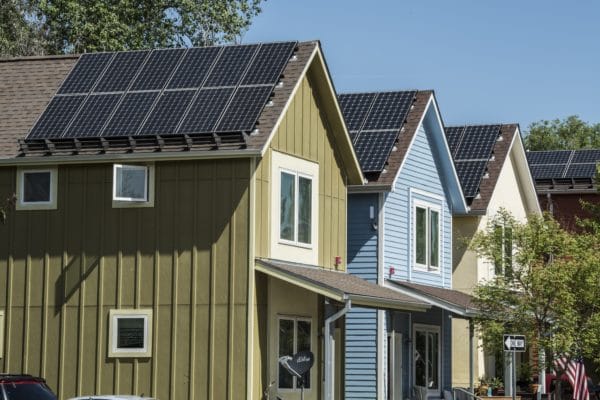
Dennis Schroeder/NREL
What hasn’t come down are the costs of legacy permitting and inspection processes. Permitting averages 30-40 days. Then, completed work has to be inspected in-person. All of this takes place across a maddeningly complex landscape of state and local standards: 18,000 jurisdictions, 3,000 utilities, and 50 states all with different rules and regulations.
Together, these legacy processes keep soft costs comprising an increasing portion of what homeowners pay to go solar. With the continued cuts in solar manufacturing costs and installation labor, soft costs are comprising more of a homeowners bill than four years ago. Permitting alone now costs an average of $1/watt. For context, the average home solar system is 6,620 watts, or a 6.62-kilowatt system of roughly 21 panels.
Solar is big enough now that its soft costs are a real drag on local economic activity. Soft costs in the U.S. defy the example of other countries that install solar at one-third the cost because of how the steps that drive soft costs have been structured.
Call to action
This is a challenge that cries out for national leadership.
Rocky Mountain Institute last summer laid out a strong case for reforming these processes, perhaps better than we can do here. It’s worth noting that streamlined permitting and inspections are not unchartered territory. Satellite systems are installed without permits. Air conditioning systems are as well. No roofing company would spend one-third of its costs on outdated, Balkanized government regulations. Why make solar installers do that?
With local governments facing an unprecedented need to cut their costs while restarting local economic activity, there’s never been a better time to harmonize codes, and bring permitting and inspection steps into the modern era. Such a step would be fast and non-partisan. More importantly, it would tap a huge, ready-made constituency that’s already behind it. All the Biden team needs to do is to put a ribbon on this idea and provide the leadership for a critical mass of local officials to get on board.
Just as the President-elect is considering calling for a national mask commitment to combat Covid-19, the Biden team can create the right platform for solar reform. It would be a fast step to Building Back Better.
Yann Brandt runs the news site SolarWakeup newsletter. Mike Casey runs the national clean economy marketing firm Tigercomm.
The views and opinions expressed in this article are the author’s own, and do not necessarily reflect those held by pv magazine.
This content is protected by copyright and may not be reused. If you want to cooperate with us and would like to reuse some of our content, please contact: editors@pv-magazine.com.
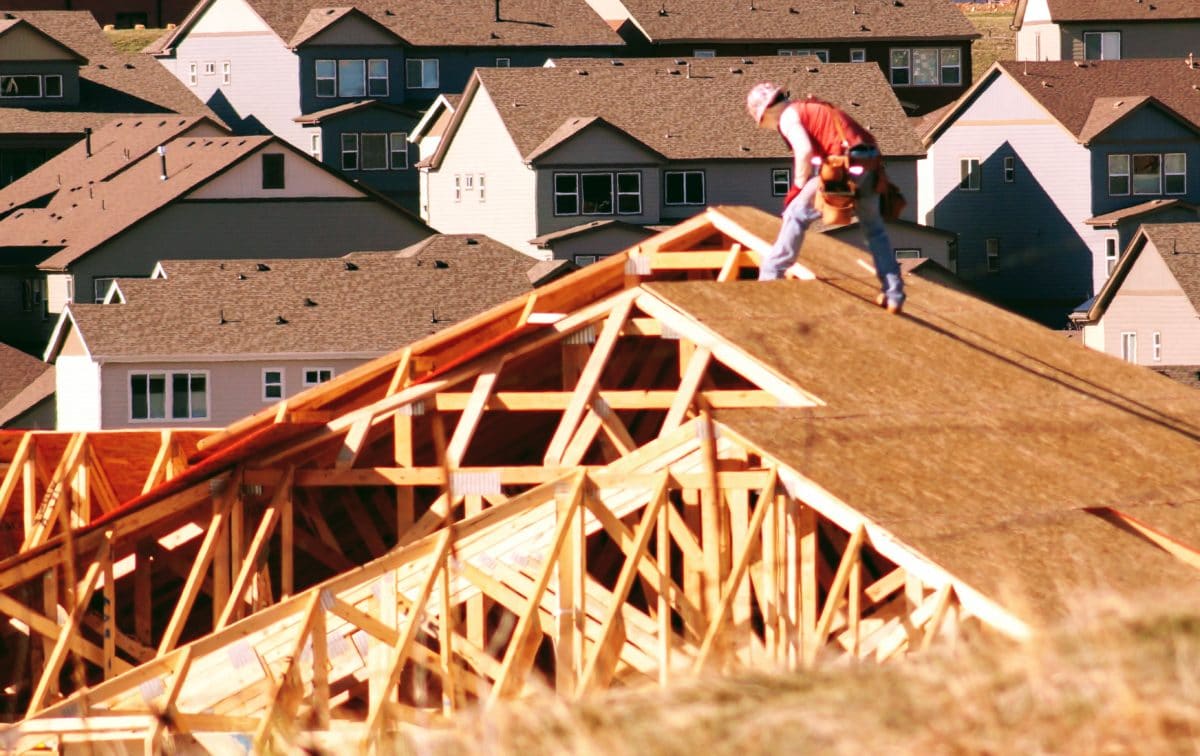


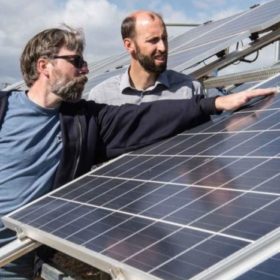
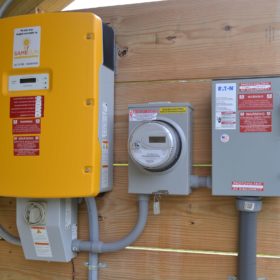

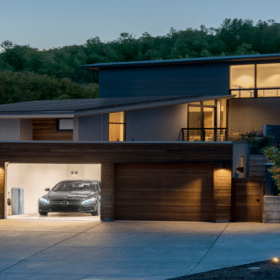
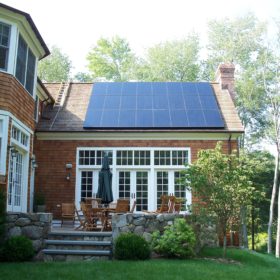
Unfortunately many rooftop systems are improperly installed. Some installation companies don’t understand the NEC or the building code, and they don’t learn, repeating the same mistakes over and over again.
Solar is a critical part of our future, but poorly installed solar only makes convincing people they want to have it on their roof harder. Some installers are great, and others not so great.
As Walmart learned PV is not without hazard, roof fires on several stores resulted in a lawsuit against one of the best known installers.
Smaller operations can be really professional and not miss anything in an installation, never making a code mistake, and others can’t seem to get it right.
One of my favorite is the installation of disconnects 50 or more feet from the meter or even on different buildings, another is leaving wires running over the top of gutters, unsecured.
Still another is installation of conductors that are too small to carry the current. No bolts in the micro-inverter to secure it in place, no repair of extra holes in the roof is another problem, not tightening bolts, a routine issue.
Permitting and inspections are required for almost all residential construction and remodeling. It protects the owner of the residence from poor workmanship. While the components of solar installation are standardized, some installers hire off the street labor, provide minimal on the job training, and little supervision. The good ones hire trained people, pay a premium and have no problems with installation.
Providing training to inspectors on solar in my state, I can tell who installed the system from a distance, I know when I will have no issues and I know when the installation will fail inspection, just by arriving on site.
If we could weed out bad installers, and keep them from ever working in the industry again, the need for permits and inspections would be reduced. I could see, a reduced permit fee for installers who have a pass rate of more than 95% over the last 12 or 24 months.
But if I have to have a permit to fix the back steps which is way less than complex than rooftop solar, why would I not need a permit for rooftop installation.
If you disagree, join me when COVID-19 is not an issue, and I will take you to some of my favorite places to teach people how not to install.
Unfortunately many rooftop systems are improperly installed. Some installation companies don’t understand the NEC or the building code, and they don’t learn, repeating the same mistakes over and over again.
(with our solar PV dish, which is not fitted on the roof but on the wall of the home next to the sky dish)
Solar is a critical part of our future, but poorly installed solar only makes convincing people they want to have it on their roof harder.
(again our solar PV dish is not fitted to the roof)
As Walmart learned PV is not without hazard, roof fires on several stores resulted in a lawsuit against one of the best known installers.
(all aspects of our solar PV dish/inverter/13amp plug is on the outside wall of the home. so no possibility for any fire to start)
I agree that there are a lot of installers that don’t know what they are doing, but instead of slowing everyone down, we have to find a way to streamline permitting, train inspectors to know solar better, and fail inspections/put on notice those who aren’t installing properly. My company is brought in to repair shoddy work all the time, so clearly the inspectors are missing things (and sometimes they are glaring problems). And yet I still believe that we need to reduce permitting time. The fact is that these systems are modular, so design is much simpler than it used to be. And yet, where we are based, most jurisdictions require a PE wet stamp plan set for structural and electrical, which adds 4-6 weeks on top of the 4 week plans review. There is no reason to require these steps, since all of the major systems providers have engineer supported/approved design tools already in place. I agree that better inspections are needed, but there are better tools available to streamline even this process. The reality is that we can achieve the goal of better quality installations while simultaneously improving the efficiency of the process.
Controlling soft costs can be done top down (feds) or bottom-up (local constituents).
Top-down, Deny any federal aid or money to ANY jurisdiction (state/county/local) that charges a fee over ($100 or so) for permitting solar residential, taxes solar as an increased property value, or in any way ” interferes with interstate commerce (Hobbs Act) ” make suits available to homeowners against jurisdictions in federal court, make class action available. Basically make it easy to sue every board member of every township/city/county that interferes with your private property declaring it both criminal and civil suit applicable.
Do away with mandates that electricians be involved for installation, save verification for grid final hook-up
I.E. – make private solar harvesting a recognized land right to which government cannot trespass or infringe.
Do away with mandates that electricians be involved for installation, save verification for grid final hook-up
YES, you can do this with our 13amp solar PV dish or panel plug n play system, so no electrician to plug it in and switch it on.
this will save you $thousands and make it affordable for any one.
“Permitting alone now costs an average of $1/watt. For context, the average home solar system is 6,620 watts, or a 6.62-kilowatt system of roughly 21 panels.”
Try plans, permitting, and inspection on a 6.62kW system for $519.40. My total cost, assuming building permit and permitting to add a 30-60A circuit in the MSP (or $0.08/watt).
This article got it wrong by not reading the source document. In the fine print of the SEIA report, they mention “total direct and indirect cost of permitting for a residential system is on the order of $1/watt,” advocating that a streamlined process causes more customers to cancel during the permitting process, adding to everyone’s bottom line. They also link this info page in the report: https://www.seia.org/initiatives/solar-automated-permit-processing-solarapp. This article incorrectly reports that permitting costs $1/watt.
Believe me, I want permitting to stay robust. Keeps the idiot next door from burning down his house and mine at the same time.
If you want to get rid of over regulations, that would mean getting rid of democratic run municipalities which Biden has ever done in over 40 years
This is absolutely not a partisan thing. Its dinosaurs in permitting offices completely unwilling to change.
I’ll agree with Doug’s comments. Education is key to successful P V design and installation. A well built system starts with a good set of plans, qualified installers, their supervisory personnel and competent inspection / plan check staff representing the local jurisdiction. I see a need for much more in-house or classroom training for new installers prior to them working in the field. I do PV / ESS plan check and inspection for a medium size city in northern CA. A set of plans for an average size (5-10 KW) can be processed within one day and a permit issued if there are no corrections. Add in an ESS system and it may be three days. Understanding Electricity and electrical theory do not come easy for a lot of people so there’s a learning curve for most of us, add in the the concept of bi-directional power flow, back-up load centers, AC & DC coupling for todays systems and a lot of installers / designers are way past their level of expertise. New products are constantly being introduced, I find that daily reading is required just to keep up. For the owner-builder, I applaud your effort. I enjoy working you on your projects. Something to be aware of though; the codes are the minimum requirements for a safe installation. They’re the bottom rung on the safety ladder for prevention of electrical shock, fire and protection for emergency personnel that may be called to a property.
100% agree with the sentiment of the article. Need a vast overhauling of local permitting and regulations regarding solar. $1 a watt for permitting is not the industry standard though.
I would go a step further and say we have to drastically transform interconnection. In the Mid-Atlantic region this can slow down projects far more than local permitting.
It is overwhelmingly crazy what I have gone through with the local permitting and regulations since I started my business in June of 2020…it almost wants to make you give up. I won’t go into details but all I will say is they are not making it easy to continue. What makes it even worse with them…there is no consistency, poor follow up back to us, and they all want their hands in the cookie jar.
We need to stop the BS now…let me know how I can assist.
Worried about my small business in Towanda, Pa
Robert W Vanderpool
Hi Robert
I am from the UK, and we don’t have any such problems with permits or any type of gov interference to put solar on the roof of a home or business, so long as it is no bigger than 1 MW. If the solar panel was not on the roof, but on the wall of the home next to the sky/satellite dish, would you have the same permit problem? Do you need a permit to put up a sky/satellite dish, as our solar panel is in the design of a dish, and you only need one per 3-4 bedroom home, and at a third of the price for a roof mounted 5kw system, as it is a DIY product.
Hi Graham,
They are some good questions that we have been trying to challenge and it always comes back to haunt us with something in the codes book that is very gray and generic which does not even mention solar. But, at the end of the day we lose as the installer because no one wants to push it here in Pennsylvania…or at least Bradford County Pa where I am.
How would you recommend me to challenge further? I have even been through a lawyer and they don’t know much about it or enough about solar here yet that they bow down.
Hi Robert
I will get our legal guys in the UK to look at your local permit requirements in Pennsylvania/ Bradford County Pa, and see if the way we are proposing to put solar on a house in the USA is within the permits rules and regulations.
Graham…That would be awesome. I have been challenging many here and I have informed all that I am not going to quit until there are clear written requirements of what they expect and need. I get very frustrated and angry when someone says…because thats the way it needs to be done….or because I said it needs to be that way…etc.etc.
Thank You and very excited to see what you come up with.